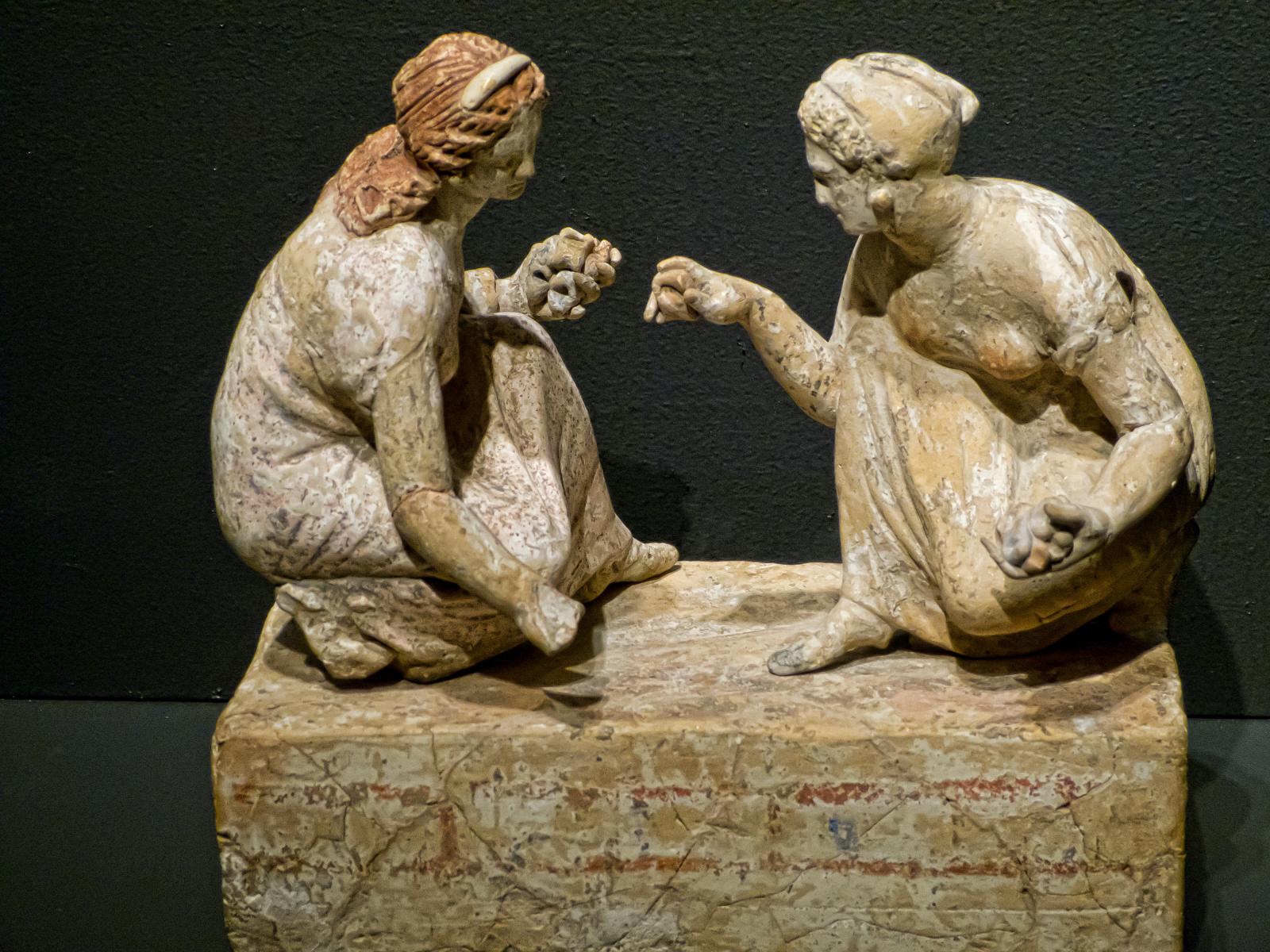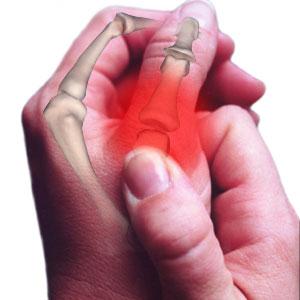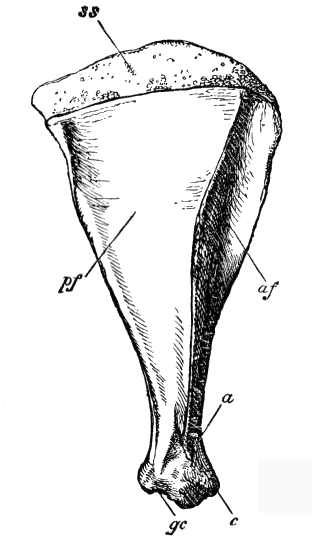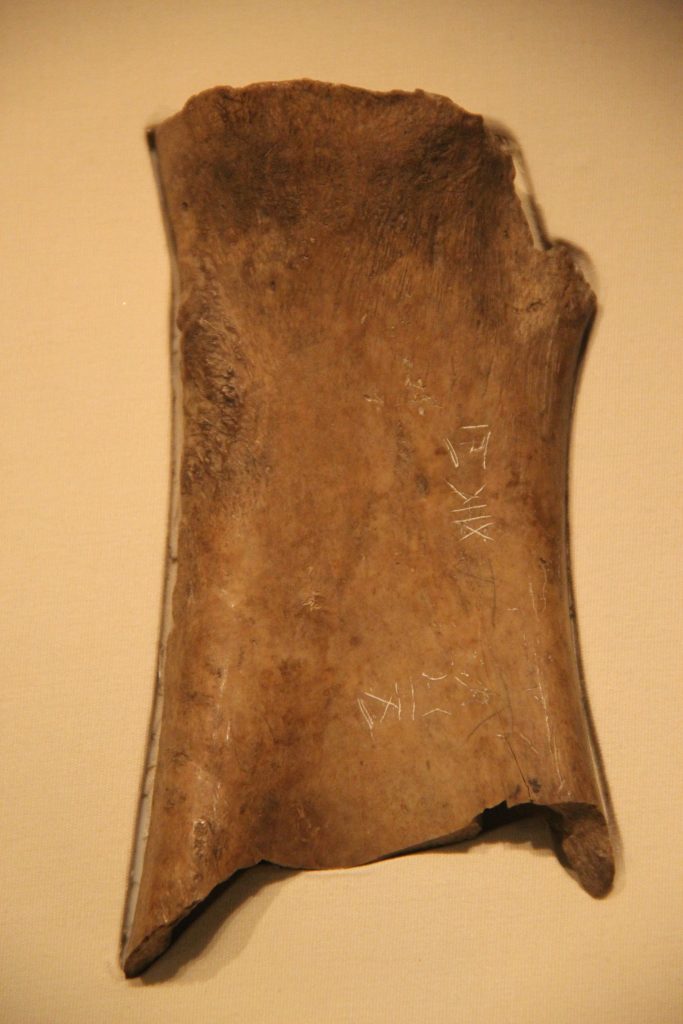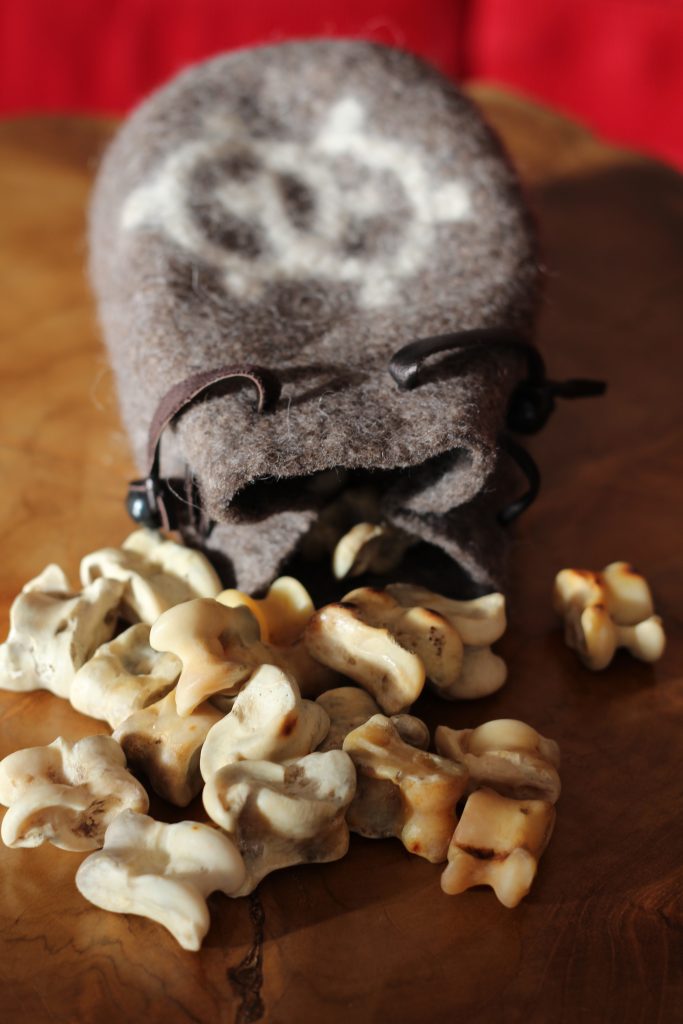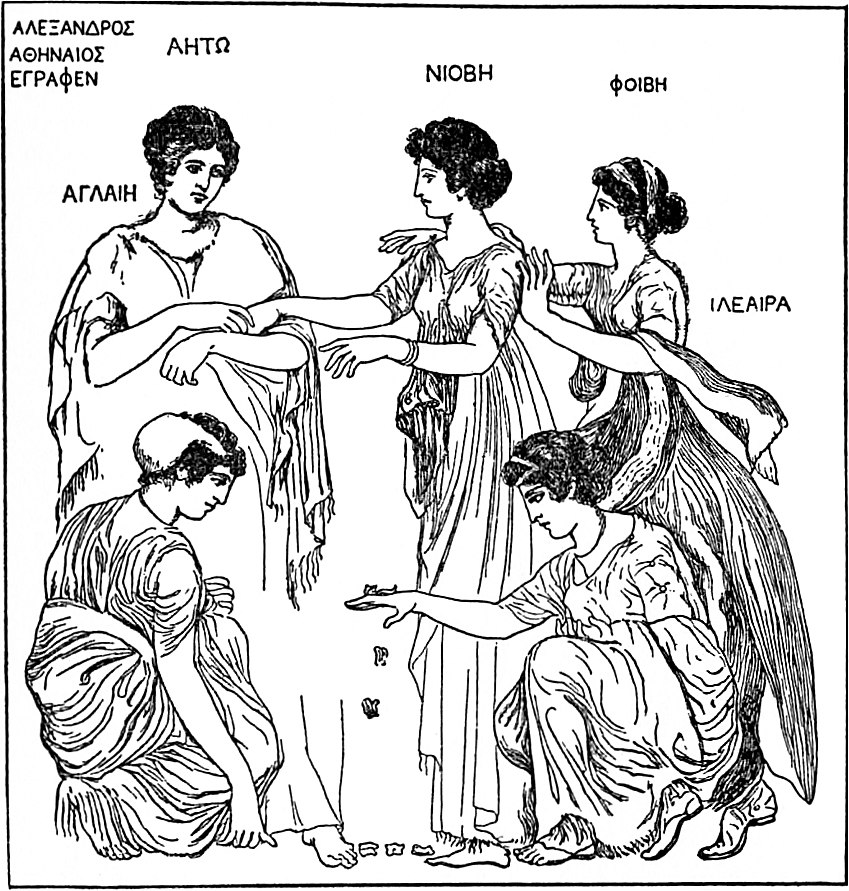My first experience with fortune telling bones was wishing bones: making a wish while breaking the turkey wishbone (the breast bone) with my sister, hoping for the longer piece and the wish fulfillment it would bring.
Check out the rest of this bone series: Bone Music, Bones are for Eating, and Bone Appreciation!
History of Telling One’s Fortune with Bones
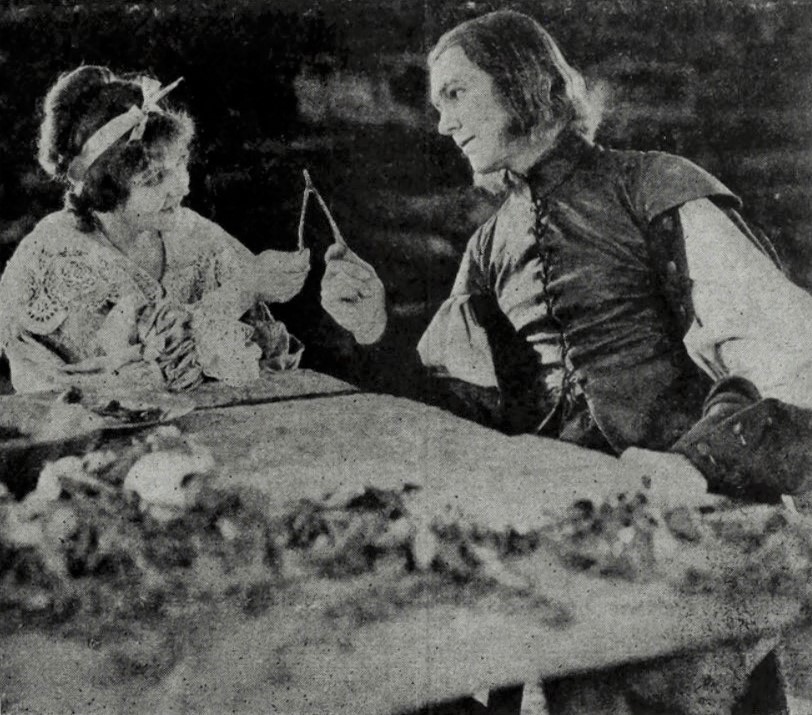
It turns out that the tradition of breaking a wishbone dates back over 2,400 years. Back then, the Etruscan people believed that chickens had all sorts of powers, including predicting the future and ensuring good fortune. The Etruscans thought that the collarbone of a chicken was sacred. After leaving it to dry in the sun, people would hold the unbroken bone and make a wish for good luck. The “wishbone tradition” originated in this early practice.
Subsequently, the people of Rome adopted the wishing tradition along with other Etruscan customs. They fought over the unbroken bones of chickens. It may be that the phrases, “I need a lucky break,” or “I never get a break,” came from the loser in the tug of collarbone contest.
The wishing bone tradition spread throughout England. When the Pilgrims arrived in the New World, they brought the custom of breaking the wishbone with them. Although there were no chickens in North America then, turkeys were abundant. European settlers transferred the custom from chickens to turkeys.
Painful Fortune Telling Bones
Some people have weather bones. I.e., they can predict changes in the weather by “feeling it” in their bones. Is this a real thing? Yes. Changes in barometric pressure and temperature can dramatically affect arthritic bones.
As many as two-thirds of people who live with chronic joint pain believe there’s a connection between their pain and changes in the weather. In a 2007 study, researchers at Tufts University found that for every 10-degree temperature drop, there was a corresponding increase in arthritis pain—i.e., the colder the weather, the greater the pain. They also reported that increasing barometric pressure increased pain, which makes sense because colder air is heavier. So, for (at least some) people, joint pain is a predictor of colder weather.
What about other methods of bone divination? I don’t have the space to discuss them all here, but many resources online provide more details and examples.
Osteomancy
Osteomancy is an ancient form of predicting the future by tossing a set of animal bones onto the ground and interpreting their positions and orientations. A set of bones for divination can be used repeatedly.
Modern practitioners of osteomancy say one should either use bones found in nature or purchase an ethically sourced set. The ideal bones for osteomancy come from animals who died of natural causes.
Scapulimancy
Scapulimancy is divination using scapulae (shoulder blades). It is/was most widely practiced in China as oracle bones, but has also been independently developed in other areas, including the West.
Generally, people used scapulimancy in predicting future weather events and personal health status. Some religious practices also required fortune telling through bones.
Historically, scapulimancy has taken two major forms. In the first, practitioners simply examined the scapula of a slaughtered animal. This form was widespread in Europe, Northern Africa, and the Near East.
The second form involves the heating or burning of the bone and interpretation of the results. People practiced this form in East Asia and North America.
Rituals surrounding the reading of scapulae varied widely, and I don’t have the space to go into many details here. Suffice it to say the practice is ancient.
Scapulimancy in East Asia
Mongolians were one of the earliest peoples to use scapulimancy, according to archaeological digs in Inner Mongolia dating scapulae to approximately 3322 BCE. Diviners referred to divination manuals to guide their interpretation of the animal remains, reading the color of the bones and formation of cracks.
Archaeological sites along the south coast and off-lying islands of the Korean peninsula show that people used deer and pig scapulae in divination during the Korean Protohistoric Period, c. 300 BCE – 300/400 CE.
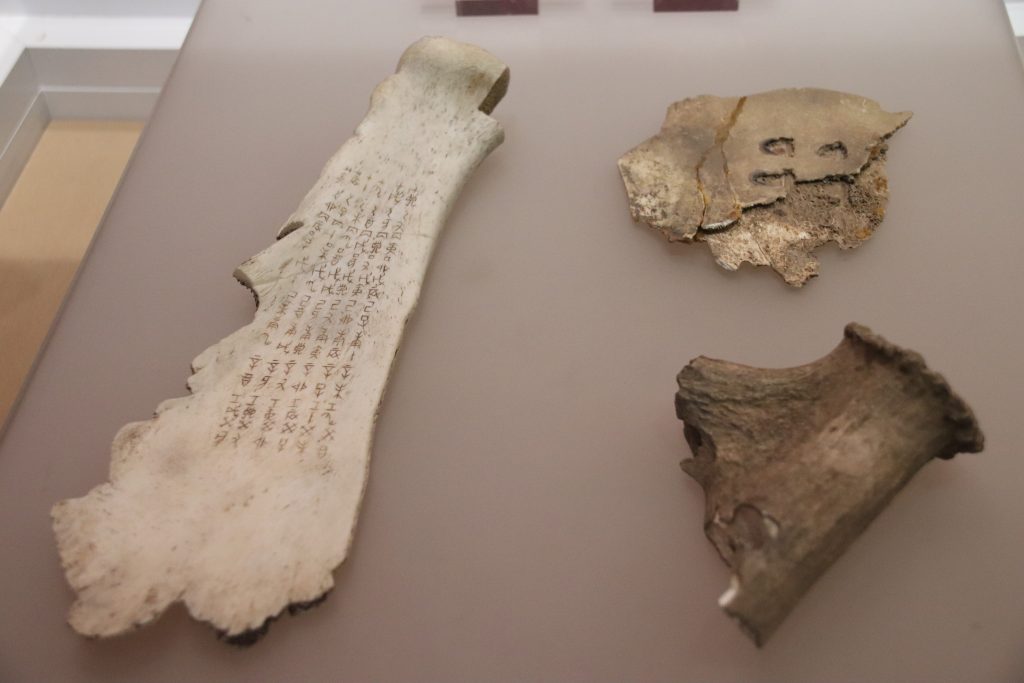
Archeological discoveries in China have yielded many specimens from a period spanned from 1250 to 1046 BCE. Ancient diviners likely exposed the bones (pig, sheep, cattle, and deer) to heat, deriving meaning from cracks that formed. The reading provided predictions for agricultural and health purposes.
Chapter 5 of the Kojiki, the Japanese Record of Ancient Matters, also mentions fortune telling bones. The heavenly deities used this process of scapulimancy during a consultation by lesser gods.
Scapulimancy in Europe and the Middle East
Scapulimancy is a method of divination among Greek and Serb farmers, even today. The memoirs of several warriors who fought during the Greek War of Independence include references. After feasts of roast lambs or kids, anyone who knew how to “read” a scapula would clean it of any remaining flesh and, lifting it up to the light, interpret the various shadowy bits showing on the transparent part of the bone.
In European Renaissance magic, scapulimancy was classified as one of the seven “forbidden arts”, along with necromancy, geomancy, aeromancy, pyromancy, chiromancy (palmistry), and hydromancy.
Evidence of Arabic scapulimancy is sparse. A Florentine manuscript dated to the 1600s is currently the most referenced source and attributes the practice of scapulimancy in medieval Western European civilizations to the migration of traditions and ideas from the Arabic world. Historians have proposed trade across the Silk Road as a medium through which scapulimantic practices pervaded medieval European traditions from merchant trade with Arabic nomads.
Scapulimancy in South Africa
Zulu diviners in South Africa, known as izangomas, traditionally used bone reading in conjunction with other rituals involving herbal concoctions to communicate with spirits and those who have passed. The izangoma placed treated bones into the medicine, then interpreted aspects of the scapula floating above the liquid as spiritual communication. People within the community will seek out an izangoma if they would like personal questions answered or to communicate with the deceased. Witch doctors in many African communities still use scapulimancy and other bone reading rituals in a wide array of traditional healing ceremonies.
Astragalomancy
Astragalomancy (also known as cubomancy) is a form of divination that uses dice specially marked with letters or numbers. Historically, the “dice” were usually knucklebones or other small bones of quadrupeds.
Each face of the die bears a symbol to convey meaning either to the reader or the divine powers. The diviner interprets this sequence according to certain rules – usually rules related to a religion (e.g. Tibetan Buddhism and the Mo system of cubomancy).
The practice of determining divine truth via random castings of dice or bones stretches back before recorded history. The Metropolitan Museum of Art displays bone “dice” (hakata) used by the Shona people of southern Africa for thousands of years.
Archaeologists have found marked astragali at many digs around the Mediterranean, including a site in Athens, Greece, dating to about 500 BCE. The Ancient Greeks performed astragalomancy by rolling dice and then consulting “dice oracles”, tables of divination results carved into statues or monoliths. In addition to matching the numbers on the astragali to the dice oracles, practitioners also held that certain numbers corresponded with particular divinities and would bring divine blessings.
The huayru is a dice game people play in South America at funerals. The game is traditionally played with llama bones, as they are believed to have a special power to attract the soul of the deceased. Reasons for playing this game revolve around divining the will of the recently deceased, often to communicate and receive guidance. The players of the game try to influence the results of the dice by offering prayers or pouring libations. (To me, this seems similar to blowing on dice before a roll for luck.)
Today, many people still call dice “bones”—whatever their material—because they were originally made of bone, as outlined above. If you want real bone dice, they are readily available online.
When everything rides on the roll of the dice, it reminds me of the wishbone tradition I started with.
Bottom Line: People have used bones to predict the future since time out of mind. Should you wish to try your hand, you can still acquire the bone ‘tools’ you need.
